
You’ve probably heard the term antioxidants bandied about by health experts. You know they’re good for you. But how exactly do they work and how should you add them to your diet?
Do you need to supplement with them? And can you get too many? Well there is a lot of science to answer this.
What are Antioxidants and Free Radicals?
The first thing you need to understand is how free radicals and the process of oxidation affect your body.
Your body is made of many different types of cells. Cells are made of molecules. Molecules consist of one or more atoms of one or more elements joined by chemical bonds.
As you may (or may not) remember from high school chem class, atoms consist of a nucleus, neutrons, protons and electrons. The number of protons (positively charged particles) in the atom’s nucleus determines the number of electrons (negatively charged particles) surrounding the atom.
Free radicals are atoms or groups of atoms with an odd (unpaired) number of electrons and can be formed when oxygen interacts with certain molecules. When an atom is “missing” a needed electron it’s unstable – as if it’s declared a State of Emergency. It will immediately attempt to replace it, even if it means “stealing” an electron from another atom. This can start a chain reaction, like dominoes.
Their chief danger comes from the damage free radicals can do when they react with important cellular components such as DNA, or the cell membrane. Cells may function poorly or die if this occurs. The damage this causes accumulates as we age.
Antioxidants To The Rescue
 Antioxidants neutralize free radicals by donating one of their own electrons, ending the electron-“stealing” reaction. They act as scavengers, helping to prevent cell and tissue damage that could lead to cellular damage and disease.
Antioxidants neutralize free radicals by donating one of their own electrons, ending the electron-“stealing” reaction. They act as scavengers, helping to prevent cell and tissue damage that could lead to cellular damage and disease.
Antioxidants are divided into two classes: water-soluble and lipid-soluble. In general, water-soluble antioxidants react with free radicals in the blood plasma and in the liquid area inside cells, while lipid (or fat)-soluble antioxidants protect the cell walls from this damage.
Dangers of Oxidative Stress
“Oxidative Stress” is the term used to explain the buildup of damage to cells caused by free radicals. This damage has been linked to diseases such as:
- Alzheimers and Parkinsons Diseases
- Complications from Diabetes
- Insulin resistance and the development of diabetes
- Cardiovascular diseases
- Age-related Macular Degeneration
- Many forms of Cancer
The theory that oxidative stress may in fact be a root cause of many of the above diseases – especially for the link between metabolic issues and cardiovascular problems – continues to gain acceptance. One reason for this is the chronic inflammation oxidative stress causes.
Benefits of Antioxidants
There are so many different types of antioxidants (see below) that it’s really hard to list all the benefits they’ve been found to deliver. Wherever possible we’ve linked to articles we have on each individual antioxidant and their benefits below.
Sources of Antioxidants
One important source of antioxidants is the food we eat. Fresh fruits and vegetables, as well as minimally processed whole grains provide what is known as micronutrient antioxidants. For most people, this is the primary source of the antioxidants their body will use.
But few people eat enough – or enough of a variety of – natural foods to supply the antioxidants necessary for optimal health. Below are some sources, both from foods and supplements, for effective antioxidants:
Vitamin C – water soluble vitamin present in citrus fruits and juices, green peppers, cabbage, spinach, broccoli, kale, cantaloupe, kiwi, and strawberries.
Vitamin E – A lipid soluble vitamin present in nuts, seeds, vegetable and fish oils, whole grains (esp. wheat germ), fortified cereals, and apricots.
Beta-Carotine – is a lipid soluble precursor to vitamin A (retinol) and is present in liver, egg yolk, milk, butter, spinach, carrots, squash, broccoli, yams, tomato, cantaloupe, peaches, and grains.
Polyphenols – These are usually plant-based, specifically plants with phytochemical or darkly-colored properties. Chocolate, tea, blueberries, red wine, sea buckthorn, pomegranite, etc. There are over 4,000 distinct species, and not all have been documented beneficial. These often fall into the water soluble category.
Astaxanthin – Technically a carotinoid (a form of beta-carotine) astaxanthin deserves special mention for three reasons: 1, it is not converted to vitamin A in the body as most carotinoids are (too much vitamin A can be toxic) and 2, its antioxidant capacity is the strongest of all carotinoids previously studied, and 3, it’s lipid-soluble nature contributes to it’s rare capacity to pass both the blood-brain and blood-retinal barriers. While it is present in small amounts in shrimp and salmon (and responsible for their orange-pink color) it is difficult to consume meaningful amounts this way. Supplement sources include algae and krill oil.
Antioxidant Overdose?
We are often asked if it’s possible to get too many antioxidants. And as with the antioxidant benefits, the answer is, “it depends.”
Some lipid-soluble antioxidants can indeed build up in your system and pose problems at high, prolonged doses. This would be some beta-carotines (because vitamin A is toxic in high doses) and Vitamin E.
Rag-Tag Research Geek Recommendation
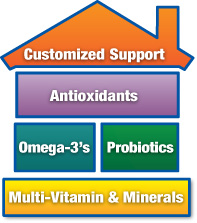 We believe antioxidants are a vital part of your total wellness strategy. So much so that we devoted an entire floor to them in our “Blueprint For Health.”
We believe antioxidants are a vital part of your total wellness strategy. So much so that we devoted an entire floor to them in our “Blueprint For Health.”
Much as the Master Suite is an essential part of any home, antioxidants are an essential part of your health strategy.
However, as mentioned above, different antioxidants work in different areas of your cells. Therefore we believe it is best to include at least two different sources of antioxidants in your supplement routine – one that is water-soluble, and one that is lipid-soluble.
Following are the specific products we recommend as antioxidants and how they fit into this plan:
Black Label Krill Oil™
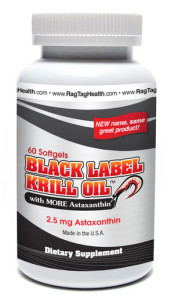 Nature’s best source of astaxanthin, our top choice for lipid-soluble antioxidant. The phospholipid structure of krill oil enhances the bioavailability of astaxanthin.
Nature’s best source of astaxanthin, our top choice for lipid-soluble antioxidant. The phospholipid structure of krill oil enhances the bioavailability of astaxanthin.
Where To Find It:
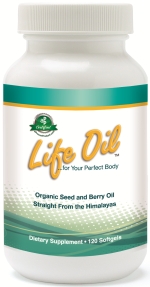 Life Oil™
Life Oil™
Sea Buckthorn uniquely contains both water and lipid soluble antioxidant properties, containing vitamin C, alpha-tocopherol (vitamin E), beta-carotene and polyphenols. Life Oil™ contains oil from both berries and seeds for maximum benefits from this amazing plant.
Where To Find It:
 Calciology™
Calciology™
Our favorite source of Vitamin C, Calciology™ also contains the optimal formula for calcium absorption and bone health.
Where To Find It:
Freshleaf Moringa Oleifera™
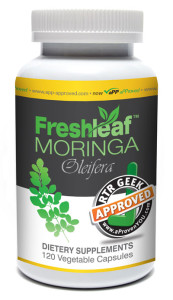 Known as the “Miracle Tree” in Himalayan India where it grows, Moringa Oleifera redefines “superfood.”
Known as the “Miracle Tree” in Himalayan India where it grows, Moringa Oleifera redefines “superfood.”
Its been featured on several daytime TV shows for its incredible wellness and energy benefits, stemming from its power-packed nutritional profile. Moringa Oleifera leaves contain:
** Seven times more vitamin C than an orange
** Three times the potassium of a banana
** Three times the iron of almonds, and as much as 25 times more than spinach
** Four times the calcium of milk, and twice the protein
** 47 different antioxidants
Where to find it:

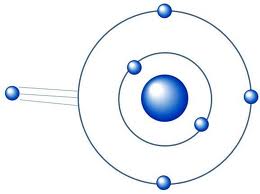

I didn’t receive (or missed) the reply to my question. Can u repeat?
I stayed logged in hoping to receive a reply to my equestion re Kriaxanthin and
Dr. Sinatra’s OmegaQ Plus being too much for me to take at the same time?
Appreciate a response. Thanks. GM
Hey, sorry if it isn’t showing up for you, I posted an answer two days ago. Let me try again:
Great to hear from you. Well it looks like the Omega Q Plus has CoenzymeQ10, added B vitamins, L-carnitine, and higher levels of the Omega-3 fatty acids but it costs more. It uses squid oil instead of krill oil, squid oil is a pretty new supplement, I wasn’t able to find much research on it. The Omega Q Plus doesn’t have astaxanthin, so I guess whether or not you continue to use it should depend on your budget and what you’re looking for most in a supplement- the Kriaxanthin probably has more antioxidants overall, while the Omega Q Plus is more focused on heart health. Its definitely not too much to take at the same time, but whether or not you continue to take them both should probably depend on your budget and what you’re looking for most in an omega supplement.
I am interested in starting astaxanthin…I currently take ProEFA from Nordic Naturals. The ratio is 270EPA/180DHA/70GLA. Would this impact the type of astaxanthin I should choose?
Hey Roxie, hope you’re doing well. There are various ways of creating synthetic astaxanthin, but it’s only approved for animal feed as far as I’ve seen so any astaxanthin that you get will be of the natural variety. So just look for reputable companies before you decide which particular brand you get.
Would taking my Nordic Natural supplement contraindicate using the Krill Oil you recommend?
I’m a new member to your site. On first perusal it looks very interesting and the research seems thorough and reliable (which in time, believe me, I will confirm). One question; how does one find specific issue information? For example, my research in Co Q10 is what led me here, now I can’t access that page from within the site. Is there a method to search your site?
First of all, LoneFunman, welcome! That’s an excellent question. Because we were so focused on research, none of us “Geeks” ever noticed that the “search” bar was missing. Kind of like how Einstien used to leave the house without pants. In all seriousness, though, we have added one, and thanks again for bringing that to our attention! Have a great day! 🙂
Are the products you recommend ISO 9001 certified?
No, this is not a certification we have required, as it is more about management and profits than something specifically for a nutritional supplement. The manufacturers who create the products are all GMP certified, which is a program that more directly applies to nutritional supplements. You can learn more about the standards for approval here: http://aprovenyou.com/wp/rag-tag-research-geek-certified/